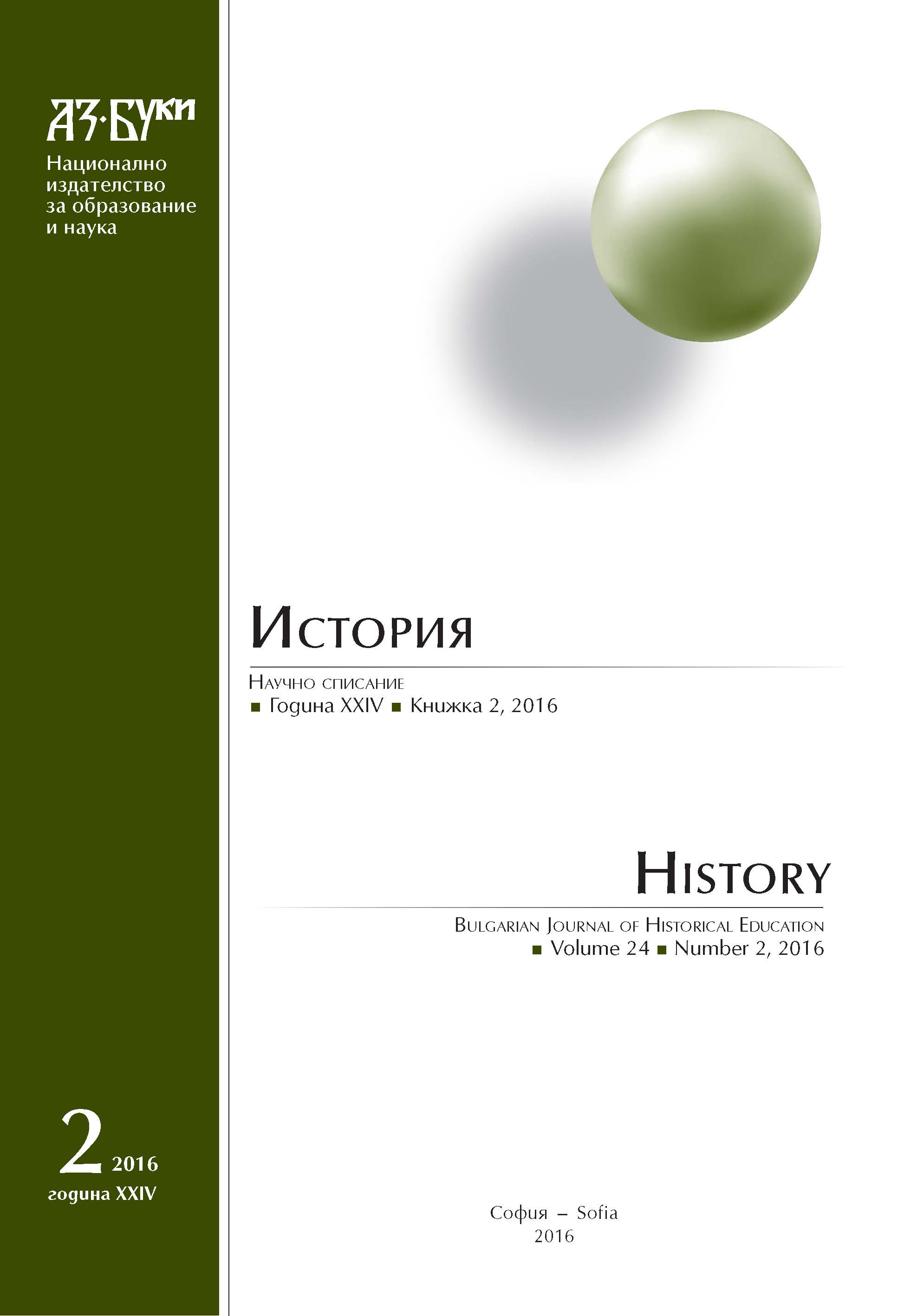
We kindly inform you that, as long as the subject affiliation of our 300.000+ articles is in progress, you might get unsufficient or no results on your third level or second level search. In this case, please broaden your search criteria.

The article discusses a few controversial ideas about the ‘essence’ of the Bulgarian nation. The foundation of the autonomous Bulgarian principality (1878) arouse the controversy between the ‘ethnic’ and the ‘civic’ perspective on the Bulgarian nation. This controversy is still actual in the Bulgarian public debates and influences the Bulgarian policy toward ethnic minorities and specific groups, such as Pomaks (Bulgarian-speaking Muslims) and Gagauz (Turkish-speaking Orthodox Christians) who did not ‘meet the standard’ for the ‘real’ Bulgarians.
More...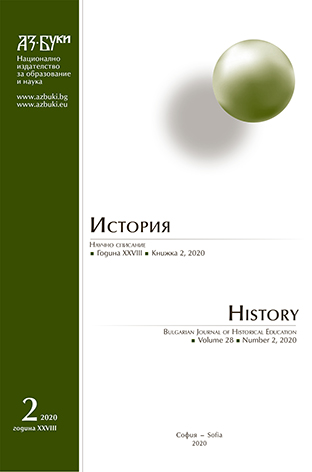

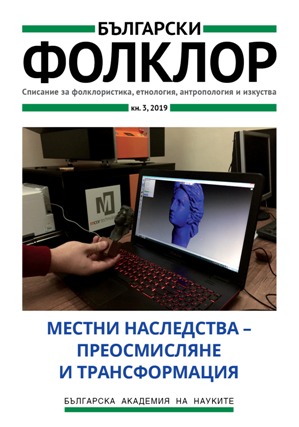
The word “monastirya” is not just a dialect variant, meaning a place (an old place), relative to the knowledge of a monastery that existed or still exists. It has a generalizing emotionally-assessing aspect, regarding the place and the function of the religious Christian monastery in the local memory. The stress in it is the statement that these are monasteries from the age of the Bulgarian kingdom.The topos “monastirya” dynamically produces the process of the ethnic and religious identification and self-identification on the grounds of a particular cult. In this same sense, there is also a variant of designation not only of Christianity. Even places, related to the Islam and most often – tekkes – are also referred to as monasteries. The cult has specific dynamics in time and grows with numerous legends and traditions. They motivate its vitality in the past by the particular character of its realization in sites that have really existed and which, in many cases, have been obliterated in the real space. Nevertheless, even today they still have their place and vitality namely as knowledge.The information that has been preserved and the local knowledge about the Little Sliven Holy Mountain confirm the place and function of the topos “monastirya” in the cultural space. Today, it is the vitality of this knowledge that lies at the root of re-creation of sites which have once existed.
More...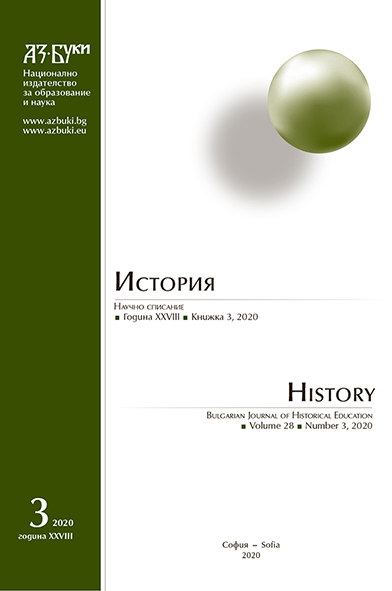
The article examines the Bulgarian political and ethnic presence in Thessaly during the Middle Ages. Thessaly is part of the early medieval Bulgarian Tsardom for short periods yet this helps to establish Bulgarian ethnic consciousness among part of Slavic population in the area. There are data in various sources for Bulgarians in Thessaly in the 11th – 15th centuries, who participate in local riots and internecine struggles.
More...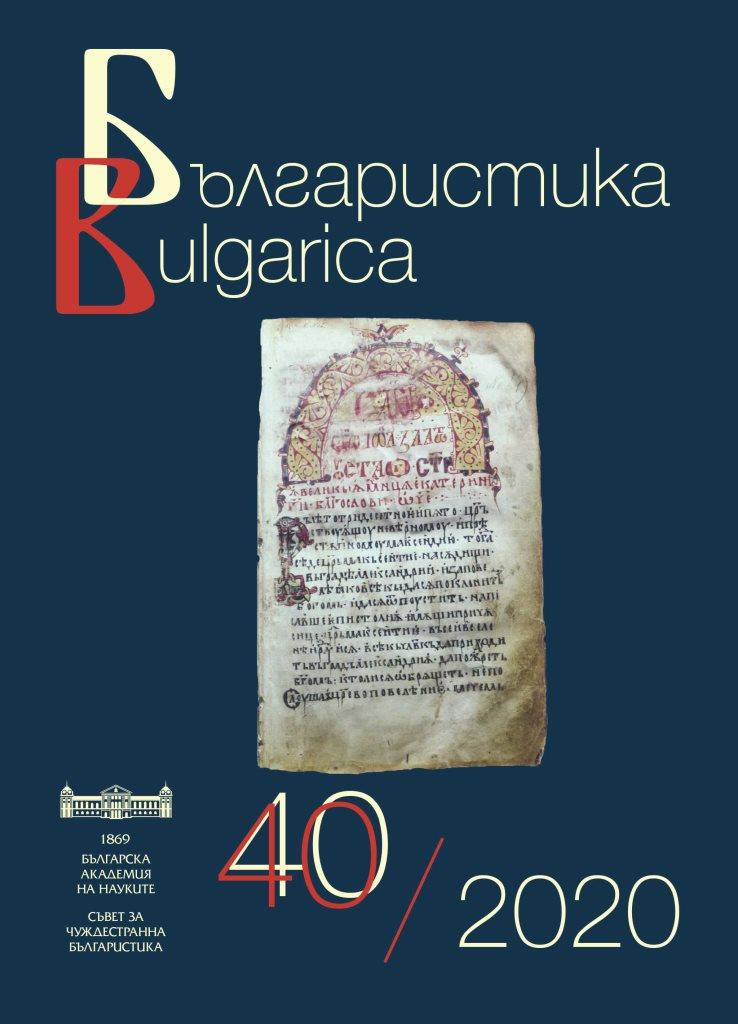

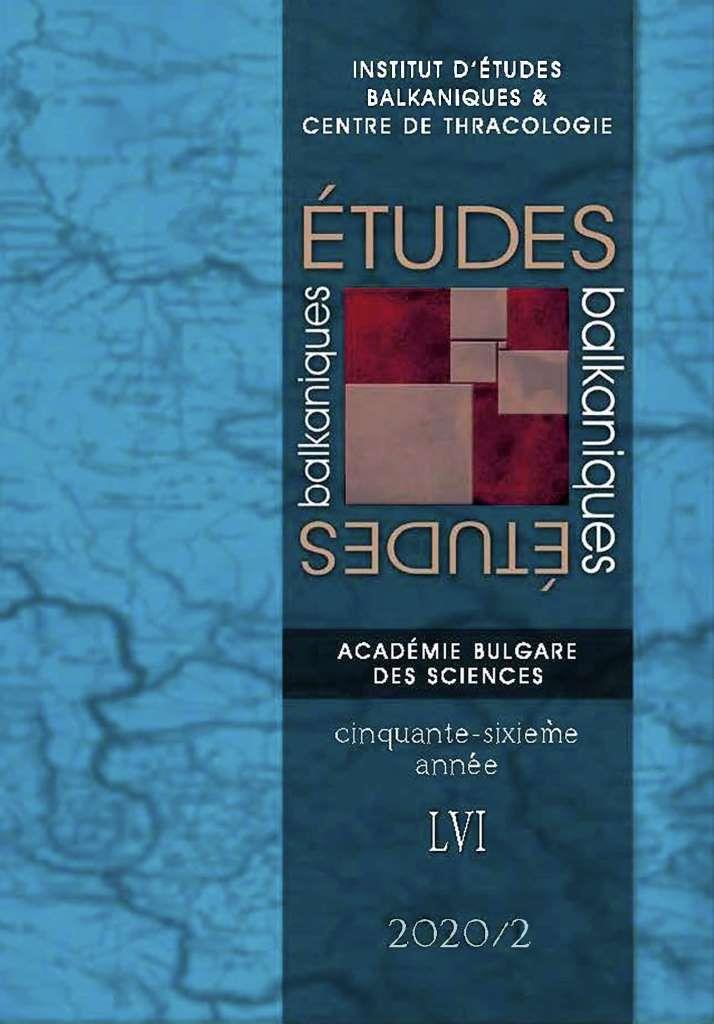
This article examines and analyses the degree of succession among the settlements which existed in the pre-Ottoman and the Ottoman period in the northern hinterland of the city of Adrianople /Edirne/ in the period of 14th – 16th century; the changes in their status which occurred after the establishment of the new Ottoman authority and the demographic development changes of the Muslim and non-Muslim population in the settlements. The present survey highlights three settlements – Skutarion, Bukelon and Provaton which in the Middle Ages were part of a group of castles protecting Adrianople from the North. After the conquest of the Balkans and their inclusion into the Ottoman military – administrative system their status changed and the three castles were transformed into centers of administrative units. Our conclusions draw on the achievements of contemporary historiography and on information, found in unpublished Ottoman tax registers from the collections of the Ottoman archives in Istanbul (Başbakanlık Osmanlı Arşivi).
More...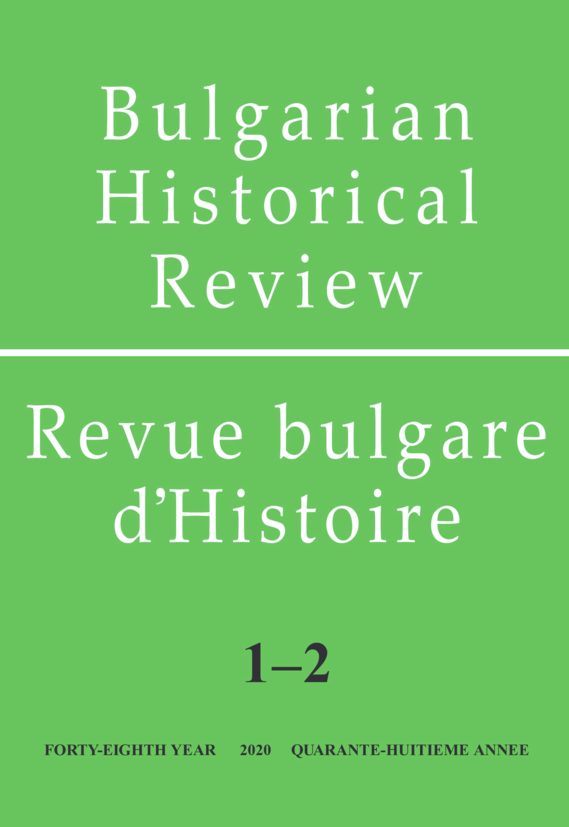
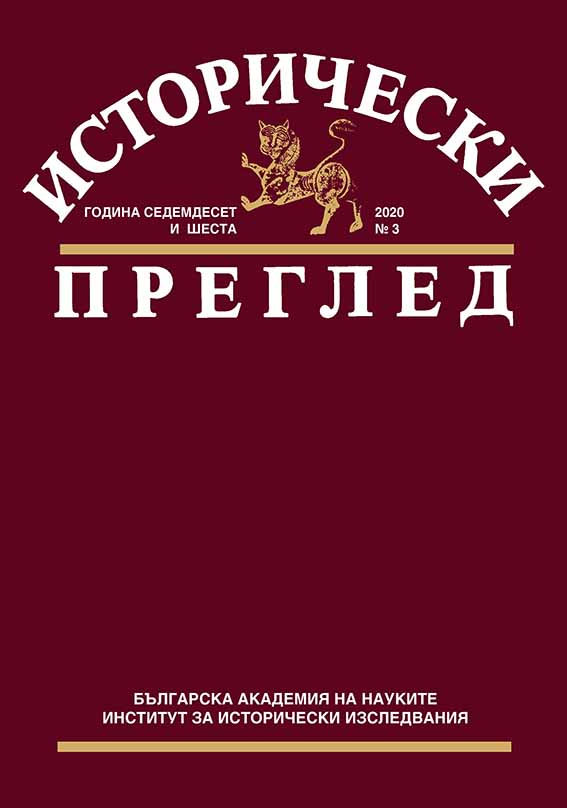
The two authors dwell on the much commented in recent years interesting medieval Fortress of Urvich near the village of Kokalyane in the vicinity of Sofia. According to the findings of the archaeological excavations, a fortification was built on the steep slope as early as the 4th–6th centuries to safeguard the important road. Abandoned in the time of the Barbarian invasions, it was reconstructed during the First Bulgarian Empire in the 10th–11th centuries. The fortification developed rapidly and flourished particularly during the Second Bulgarian Empire in the 12th–14th centuries. There are documents evidencing that Urvich was involved actively in the defence of Sofia against the Ottoman invasion and suffered the same unfortunate fate as the big city. The excavations show that in the 15th–17th centuries an important Christian monastery was founded on the ruins of the fortress; the monastery was burnt to ashes by the Ottomans during the Bulgarian uprisings inspired by the Austro-Turkish Wars in the late 17th – the first half of the 18th centuries. Information from various historical sources on the fate of the Urvich Fortress is gathered and analysed in this article. The earliest is a seal from the 11th century, belonging to the Byzantine aristocrat Nikolay Οὐρβίτζιον – the Greek spelling for the Bulgarian “Urvich”. Worthy of note is the rich Bulgarian folklore tradition, describing the resistance of the Bulgarians against the Ottoman invasion, where the Urvich Fortress is repeatedly mentioned. In this regard, it is mentioned also in the Slavo- Bulgarian History completed in 1762 by Paisius of Hilendar. A definite contribution of the two authors is the discovery that Urvich was mentioned as Oruitro in several Western European travelogues and road maps from the 17th and18th centuries. Their descriptions and designations make it clear that at that time the walls of the ancient fortress were preserved in good height, and that there was a “beautiful monastery” within the walls. This description corresponds and corroborates fully the data from the archaeological excavations.
More...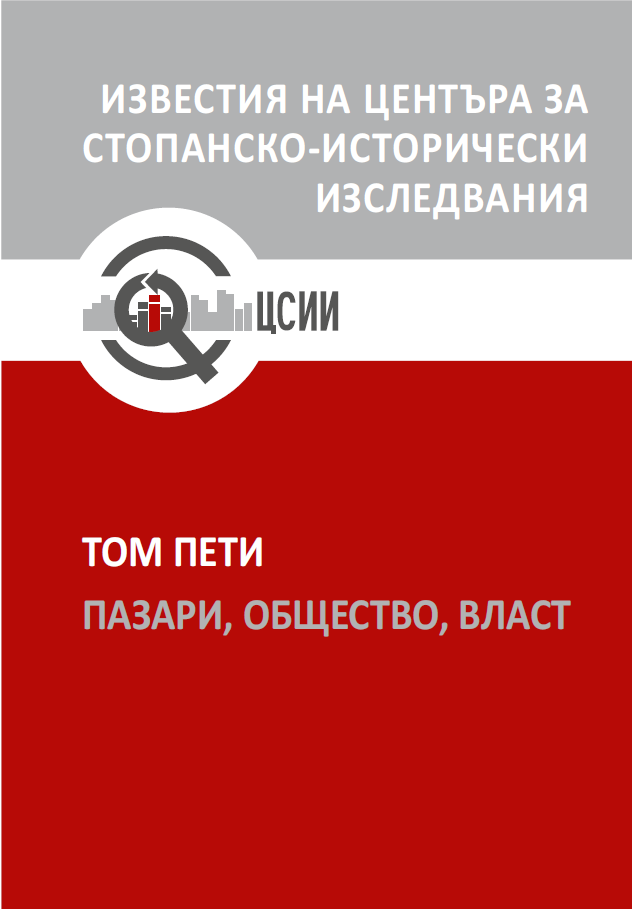
The article dwells on the role that trade played in the annexation of land along the southeastern coast of the Baltic Sea after a series of crusades and mass Christianization of local tribes during the late 12th and early 13th c. The author analyzes the development of urban life and communications in Livonia, emphasizing the crucial role that commercial activity and the development of trade routes played in the integration of these lands and population into the Christian European world. Afterwards, the author takes a comparative research approach by drawing parallels between the Mediterranean area and the Black Sea basin during the 13th c. It is stressed that, unlike the merchants of the Hanseatic League, who established a solid cartel, which allowed them to monopolize trade in the Baltic Sea, the Italian merchants could not afford such a course of action. Also, the article focuses on the significance of winter routes along the frozen rivers and lakes in Livonia in comparison to Southern and Southeastern Europe. In conclusion, it is stated that the commercial activity in Livonian lands during the 13th c. can be considered in the context of integration processes but it cannot be considered the only and primary way to integration. For instance, based on the comparison with Genoese trade in the Mediterranean Sea, the Back Sea and the Sea of Azov a conclusion can be drawn that the longer routes of the Genoese involved more risk factors. In this aspect, Livonia was in control of relatively shorter and more easily accessible routes, with summer and winter options. This contributed to the flourishing of trade in that region as well as the fostering of international and domestic integration over the following centuries.
More...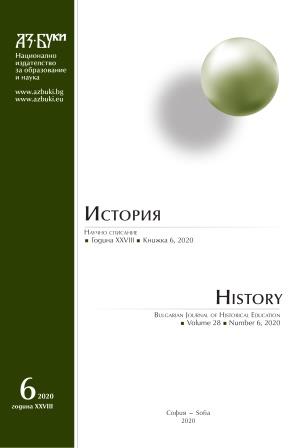

On the basis of partially published Ottoman register material from the 16th and 17th centuries and the published legislative acts of the Ottoman sultans – canuns and canunnames (laws and legislations), and etc., regulating the system of market duties and taxes in the Ottoman Empire, the author makes an attempt tooutline the economic characteristics of the settlements – a total of 43 – from the nahi / kaza of Hotalich and the formation of market relations within its scope. The diverse and compact information contained in the selected for the purposes of the study mufassal (detailed, nominal) defters from 1516–1517, 1541–1545, 1613–1614 and 1642–1646 allows us to follow: the establishment of Servi/Selvi as the administrative center of the nahi/kaza Hotalich; to look for indications of its urban status; the formation of a separate market, as indicated by the inscribed market bac by Servi itself (bac-i bazar nefs-i Servi), and its transformation into a market center for the region. It is the commercial bac fee, which as a rule accompanies every transaction on the local city market (except for the purchase and sale of real estate – vineyards, gardens, mills, houses, shops) and is an important part of the system of market duties and taxes is a definite indicator of market activity in the studied settlements. Although it is difficult to reconstruct the picture of the city market only on the basis of the records in the mufassal defteris, which register only the volume of this activity, the applied deductive, conditionally speaking, and inductive method to the entered taxes and fees, reveal not only the whole set of cultivated crops and specific livelihoods of the population, but also provide an opportunity to highlight those industries in the general production characteristics of the settlements of the nahi Hotalich, oriented to the market.
More...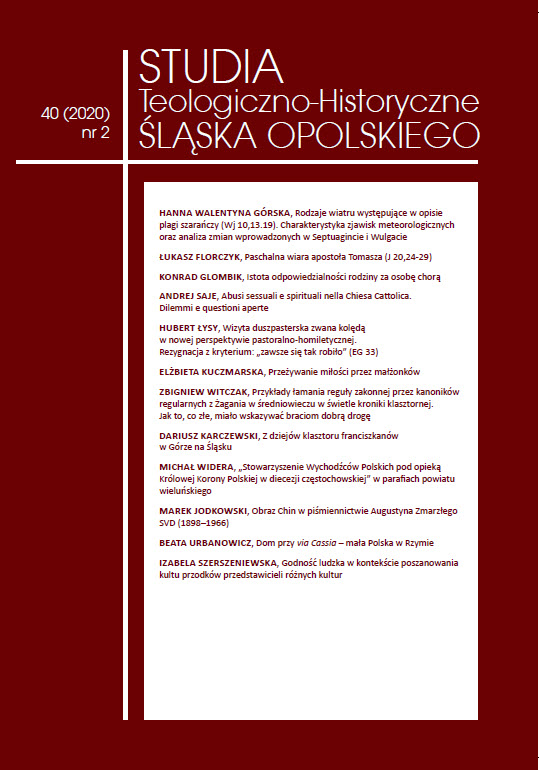
Godność ludzka ma uniwersalny, ponadkulturowy i ponadnarodowy charakter. Każdy człowiek od chwili narodzin aż do momentu śmierci powinien być traktowany z należytą godnością. Poszanowanie kultu przodków, stanowiące element ludzkiego życia w inherentny sposób wiąże się z godnością człowieka. Celem artykułu jest zaprezentowanie znaczenia godności ludzkiej w kontekście poszanowania kultu przodków przedstawicieli różnych kultur.
More...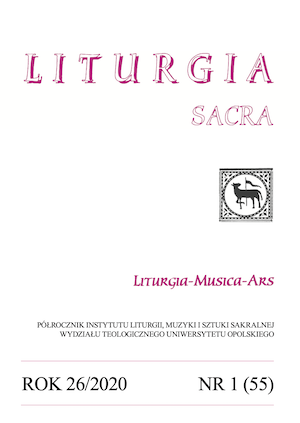
Interesującym zjawiskiem w oficjach o Św. Katarzynie z Aleksandrii jest modlitwa (kolekta) „Deus qui dedisti legem Moysi…”. Nie ma ona jednej, uniwersalnej wersji (jak np. „Pater noster”). Autor podzielił tekst kolekty na kilkanaście elementów (fraz), wskazując, że niemal wszystkie one mogą być rozmaicie kształtowane. Niektóre z nich są charakterystyczne – tym samym mogą wskazywać na proweniencję księgi liturgicznej.
More...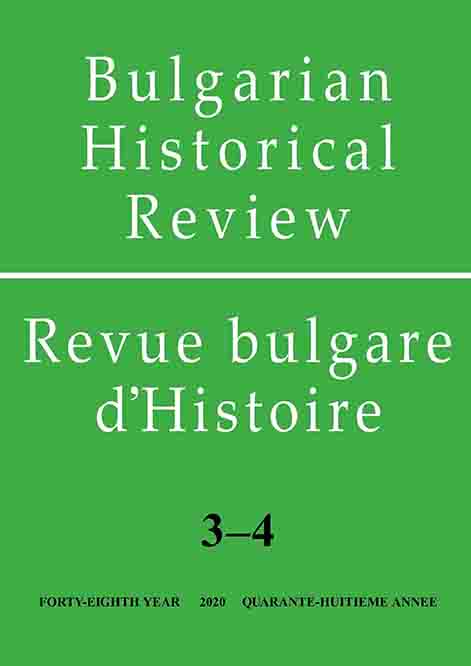
After the notorious persecution of its Khurasani protagonists, profiting from the political and ideological vacuum of the interregnum and the upsurge of the Shiite propaganda of the late 15th century, the Hurufi teaching penetrated Eastern and Central Anatolia, partly disguised under the tenets of different Batini indoctrinated groups, making these regions by the end of the century, its new stronghold. The main stage of the events became the Ottoman lands. Particularly in the years after the Ankara disaster of 1402, Asia Minor and the Balkans became a fertile soil for all unorthodox doctrines, especially those, like Hurufi one, nurturing apocalyptic or messianic expectations. Simultaneously, Persian and the Gurgani vernacular retreated before the Anatolian Turkish as its written medium. The paper concentrates on the exegetical attempts of the second generation of Fażl Allāh Astarābādī (d. 1394)’s disciples, in particular the first Turkish translations and commentaries on his seminal works.
More...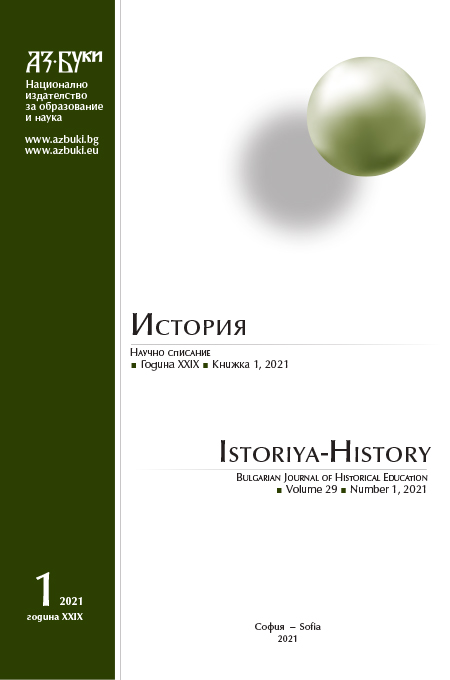
Planned as an expedition to liberate Jerusalem from the Muslims, the Fourth Crusade became a crushing weapon, destroying Byzantium and changing the fate of the Balkans. Its leader marquis Boniface of Montferrat was one of the people, who had the greatest influence in directing the pilgrims to Constantinople. Fulfilling his vassal duty to Philip of Swabia and pursuing his ambition to restore the lands and authority of his brothers in Byzantium, he set out for the East. A brave knight, an influential seigneur, an experienced military leader, but an unscrupulous and a cruel politician, he lost the “battle” for the imperial crown of Constantinople, but won Thessaloniki. There he set the beginning of a new crusader state, which covered the lands from the Rhodope Mountains to the Peloponnese peninsula. However, his eastern adventure ended tragically. Underestimating the force and the abilities of the Bulgarians, he lost his life in battle against them.
More...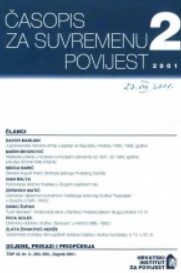
Review of: Mira Kolar-Dimitrijević - Ludwig STEINDORFF, Kroatien, Regensburg 2001., Verlag Friedrich Pustet, 272 str.
More...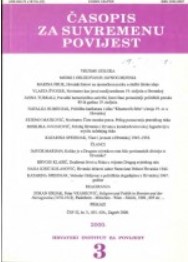
Review of: Robert Holjevac - Mustafa IMAMOVIĆ, Historija Bošnjaka, Sarajevo 1996
More...